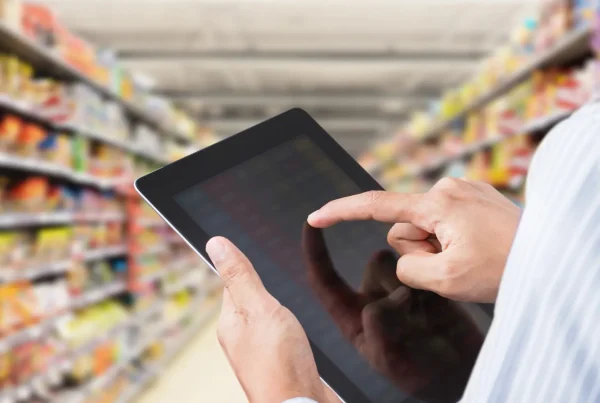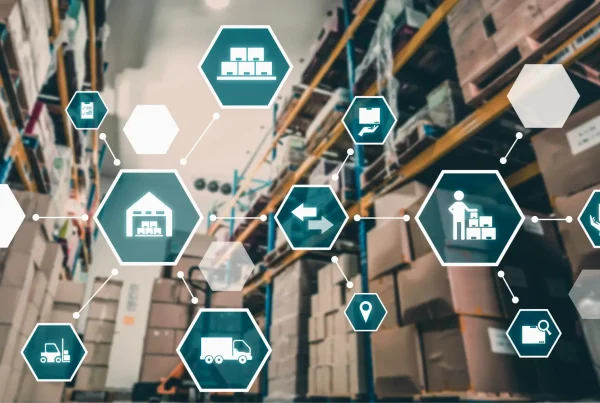Do you know trade promotion management software is a problem solver for businesses? It’s not just about managing trade promotions; it’s about transforming them into strategic tools that drive sales and strengthen market presence. Key questions: How do manufacturers discern the right time to implement such a powerful tool in their business arsenal? How have different sectors leveraged this technology for remarkable success?
Read the complete blog to find answers to these questions, shedding light on when and why trade promotion management software becomes an indispensable asset for retailers who are looking to revolutionize their trade promotion strategies.
Let’s get started!
What is Trade Promotions Management?
Trade promotions management (TPM) is a strategic approach used by manufacturers, retailers/brands to plan, execute, and analyze trade promotional activities aimed at increasing product demand and sales. This comprehensive process spans from budgeting and forecasting to execution and post-promotion analysis. This software enables businesses to effectively manage their trade promotional strategies, align them with their overall sales objectives, and ensure a better return on investment.
There’s a major difference between trade and consumer promotions. Trade promotions are directly related to promotion practices between manufacturers and retailers whereas consumer promotions are directed by retailers for their customers.
Impact of Digital Transformation
Promotion planning solutions have become an indispensable tool for businesses seeking to stay competitive. Trade promotion management software facilitates this by offering a comprehensive and agile platform for manufacturers and retailers/brands to allocate budget in campaigns that produce better results. Digital transformation has brought AI in the picture—this predictive analysis maximizes the opportunities for manufacturers and retailers/brands to gain a better return on promotions. Let’s dig deeper.
Analyzing the Need for Trade Promotion Management Software
Before implementing strategies, we need to address what makes this tool special. It supports real-time monitoring and management of promotional campaigns, allowing for agile adjustments based on performance metrics. This leads to improved resource allocation, better alignment with market dynamics, and ultimately, a stronger competitive edge in the marketplace.
Signs of Inefficiency
Manual processes and disjointed systems not only lead to inefficiencies but also limit the potential of your trade promotional strategies. If your current approach to trade promotions feels more like a guessing game than a strategic operation, it’s time to consider a trade promotion optimization solution. This technology brings clarity and precision to the promotion planning solutions.
Bridging the Gap Between Strategy and Execution
Trade promotion management software serves as the bridge between strategic planning and effective execution. By providing real-time data and analytics, it enables businesses to make swift, informed decisions. Your approach to trade promotion will not only impact retailers, but maintain their relationship with their customers.
Challenges Before Promotion Planning Solutions
The Era of Uncertainty
Before promotion planning solutions became a staple in the retail industry, businesses were navigating a landscape filled with unpredictability. The lack of precise, actionable data was a significant hurdle. Retailers often had to rely on gut feelings and rough estimates when planning trade promotions, leading to strategies that were hit or miss.
This era of uncertainty was marked by a high risk of financial losses, as misjudged trade promotions not only failed to yield expected returns but also could deplete valuable resources. Retailers were left in a reactive stance, struggling to adapt to market changes, rather than proactively shaping their trade promotional strategies.
This uncertainty extended beyond just financial implications. It affected the overall strategic direction of businesses. Without concrete data, it was challenging to justify investments in specific trade promotions, making it difficult for decision-makers to secure buy-in from stakeholders. This situation often led to a conservative approach to trade promotions, with businesses hesitating to explore innovative or untested trade promotional tactics. As a result, the industry’s growth and evolution were stymied, confined by the limitations of available information and tools.
Struggle with Data Integration
The challenge of integrating data sources was another significant obstacle before the advent of trade promotion management software.
Manually compiling and analyzing this data was not only time-consuming but fraught with the risk of human error. The process often resulted in inconsistent or incomplete data analysis, leading to misinformed decisions and strategies that were out of sync with market realities. This lack of a cohesive, integrated data analysis system was a major impediment to understanding the full picture of trade promotional campaign effectiveness.
Manufacturers and retailers/brands found it challenging to benchmark their trade promotions against industry standards or competitor strategies, as there was no streamlined way to aggregate and compare relevant data. This situation led to a reactive approach to competition, where businesses would often be playing catch-up rather than leading with innovative trade promotional tactics. Consequently, the retail sector was marked by a homogeneity of strategies, with few businesses able to stand out in the crowded marketplace due to their limited view and understanding of the broader market trends and consumer behaviors.
Inefficiency and Limited Scope
The absence of advanced analytics tools in the pre-trade promotion management era significantly limited business’s ability to build sales strategy. Promotional activities were often based on historical data lacking the depth and sophistication needed for accurate forecasting. It affected the immediate outcomes of trade promotional campaigns but also hindered long-term strategic planning, leading to suboptimal utilization of marketing budgets and resources.
The industry’s progress was hampered by a lack of tools that could provide insights into emerging trends and enable retailers to experiment confidently with novel trade promotional techniques. Businesses that dared to innovate did so at a significant risk, while others remained anchored to outdated practices, missing out on building an active relationship with retailers. Advantages of Trade Promotions
Advantages of Trade Promotions
Market Promotion and Brand Visibility
Trade promotions enable businesses to strategically introduce new products in the market, maintaining an efficient flow of sales and market presence. This further enhances brand awareness and encourages trial and adoption among new consumer groups, ensuring brand’s loyalty and recall value.
Competitive Advantage in the Market
The ability to execute successful trade promotions is a game-changer. Businesses that harness the power of trade promotion management software differentiate themselves from competitors by achieving more orders from retailers, ultimately, increasing their market share.
Fact 💡
Are you aware that globally, consumer goods companies allocate 20-30% of their revenue to trade promotions?
Features of Promotion Planning Solutions
Campaign Monitor: The Power of Visibility
A key feature of trade promotion management software is the campaign monitor. This tool provides businesses with a clear overview of all ongoing and planned trade promotions. It enables them to track KPIs for each product line, make data-driven adjustments, and ensure that each campaign aligns with their overall strategy.
Easy Integration: Seamless Data Flow
Easy integration is another crucial aspect. This feature allows for seamless incorporation of various data sources (internal and external data systems) into the trade promotion management system. It ensures that all relevant information is accessible in one place, enabling more accurate planning and analysis.
Predicting Trade Promotional Outcomes
Trade promotion management software comprehends the complete lifecycle of the products and predicts outcomes, enabling manufacturers and retailers/brands to build effective strategies. Additionally, a flexibility to improvise at intervals and achieve maximum results.
Trade Promotion Optimization: Key Use Cases
Enhancing Sales Performance in Grocery Retail
A manufacturer offers increasing discounts to retailers based on the volume of inventory ordered. For example, a 10% discount for 100 units, increasing to 20% for 500 units. This encourages retailers to stock more to avail higher discounts.
Optimizing Product Launches in Consumer Electronics
A consumer electronics company utilizes trade promotion management software to plan and execute promotions for new product launches. The software’s predictive analytics enabled them to allocate their budget effectively, ensuring maximum market penetration.
Seasonal Stocking Incentives
During peak seasons, businesses offer special incentives for retailers who stock up early or in larger quantities, aligning with anticipated consumer demand spikes.
Bonus Products for High Orders
For every large order, retailers receive bonus products free of charge. For instance, ordering 1000 units of a product might come with an extra 50 units for free, making the proposition more attractive for stocking up.
Loyalty Rewards Program
Retailers earn reward points for the volume of inventory purchased over time, which can be redeemed for discounts, exclusive products, or marketing support. This not only encourages more inventory stocking but also fosters long-term relationships.
Trade Promotion Software: A Solution
Choosing the right trade promotion management software is a critical decision for any retailer or consumer goods business. By assessing these key aspects, businesses pursue a solution that not only meets their current needs but also positions them for future success.
Frequently Asked Questions
Q. How is trade promotion management the right solution for manufacturers and retailers?
Trade promotion management is an ideal solution for manufacturers and retailers as it streamlines and enhances the efficiency of trade promotional campaigns. By leveraging data analytics and market insights, this approach optimizes the planning, execution, and constant evaluation of trade promotions, leading to improved return on investment.
Q. What are the advantages of trade promotions?
Some of the advantages of trade promotion include enhancing market penetration and brand visibility, improving inventory management through strategic stock clearance, and strengthening retailer-partner relationships.
Q. What is trade promotion optimization?
Trade promotion optimization involves strategically using data and analytics to enhance the effectiveness of promotional activities. By optimizing trade promotions, companies aim to improve product visibility, increase sales, and strengthen relationships with retailers.
Take the Next Step
Ready to transform your business with advanced trade promotions management solutions? Let’s take the next step, together.
Impact Analytics TradeSmart™—Gain real time visibility into your promotional expenses and refine your trade promotion efficiency for superior business results.





